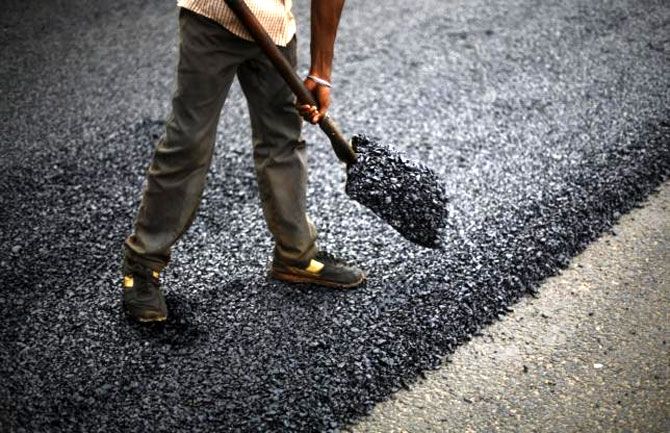India's network has expanded at a compound annual rate of around 4% which has added more than 4.8 km of additional roads since 1951, but even so the network remains badly underdeveloped

India has embarked on a massive road construction programme that both reflects and will stimulate increased ownership of cars and motorcycles and drive continued rapid growth in gasoline and diesel consumption.
India has the second-largest road network after the United States, with 5.23 million km of roads, of which 3.17 million are surfaced (Basic road statistics of India, ministry of road transport and highways, 2015).
The country's network has expanded at a compound annual rate of around 4 per cent which has added more than 4.8 km of additional roads since 1951, but even so the network remains badly underdeveloped.
National highways, the arterial roads connecting state capitals, ports and rail junctions, which the government calls the "economic backbone of the country", carry 40 per cent of passenger and freight traffic but account for just 79,000 km or 1.5 per cent of the total.

State highways, which provide trunk connections within India's states and territories, account for a further 170,000 km (3 per cent). Urban roads add another 450,000 km (9 per cent).
But the majority of the network consists rural roads, stretching for 3.2 million km, some 60 per cent of the total. More than 60 per cent of the rural road network is unsurfaced.
In theory, India's network is better than China's or Brazil's and compares favourably with many advanced economies, according to official statistics.

But the fact that so much of it consists of local unpaved roads rather than major freight and passenger arteries is a 'point of concern' according to the government.
Poor roads lead to immense problems moving freight between ports and the interior, as well as between different regions and states, holding back national integration and economic growth.
Road building has lagged behind motorisation of the country. Between 1951 and 2013, the number of registered vehicles went up by 11 per cent a year, nearly three times as fast as the 4 per cent increase in the road network and five times as fast as the growth of national highways.

Since 2012, the country has embarked on a massive road building programme specifically aimed at upgrading the quality of the network.
The total length of the network rose 7.5 per cent in 2012-13 but the number of kilometres of surfaced highway soared 17.5 per cent.
The massive road building programme continued in 2013-14 and 2014-15 (Embarking towards the horizon of success and prosperity, ministry of road transport and highways, 2015).
Thousands of extra kilometres of surfaced national highways are under construction as well as a host of smaller state highways and rural roads.
Road building and upgrading is essential to the government's vision for economic modernisation as well as providing short-term stimulus (Better roads grease the wheels of India's economy, Wall Street Journal, May 17).
According to the government: "(The) road network is vital for sustained and inclusive growth of the economy. It facilitates the movement of passengers and freight across the country. It promotes efficiency in the economy by minimising total transportation cost in terms of economies of production, distribution and consumption."
In many ways, India is attempting to replicate the transformational impact of the US interstate highway system launched by the Eisenhower administration in 1956 (History of the interstate highway system, Federal Highway Administration).

Past experience from the United States and other advanced economies suggests massive highway construction will promote the creation of a more integrated national economy and increase freight and passenger traffic further.
That will in turn spur further rapid growth in the country's oil consumption, especially transport fuels such as gasoline and diesel.
India's oil consumption has grown at an average annual rate of 5 per cent over the last decade, hitting 4 million barrels per day in 2015-16 (India's mobility revolution is driving global oil demand, Reuters, May 16).
The country is currently the world's fourth-largest oil consumer behind the United States, China and Japan, and is set to overtake Japan for the third slot in the next 12-18 months.
Given how few motor vehicles the country currently has per head of population, and how underdeveloped the road network remains, there is enormous potential for growth in oil consumption over the next 10-15 years.
India's oil consumption is projected to grow by 3 per cent per year, more than doubling from 3.6 million bpd in 2012 to 8.3 million by 2040, according to the US Energy Information Administration (International energy outlook, EIA, 2016).
India is set to join China as the most important source of global oil demand growth over the next two decades.
Photographs: Adnan Abidi/Reuters; Amit Dave/Reuters













